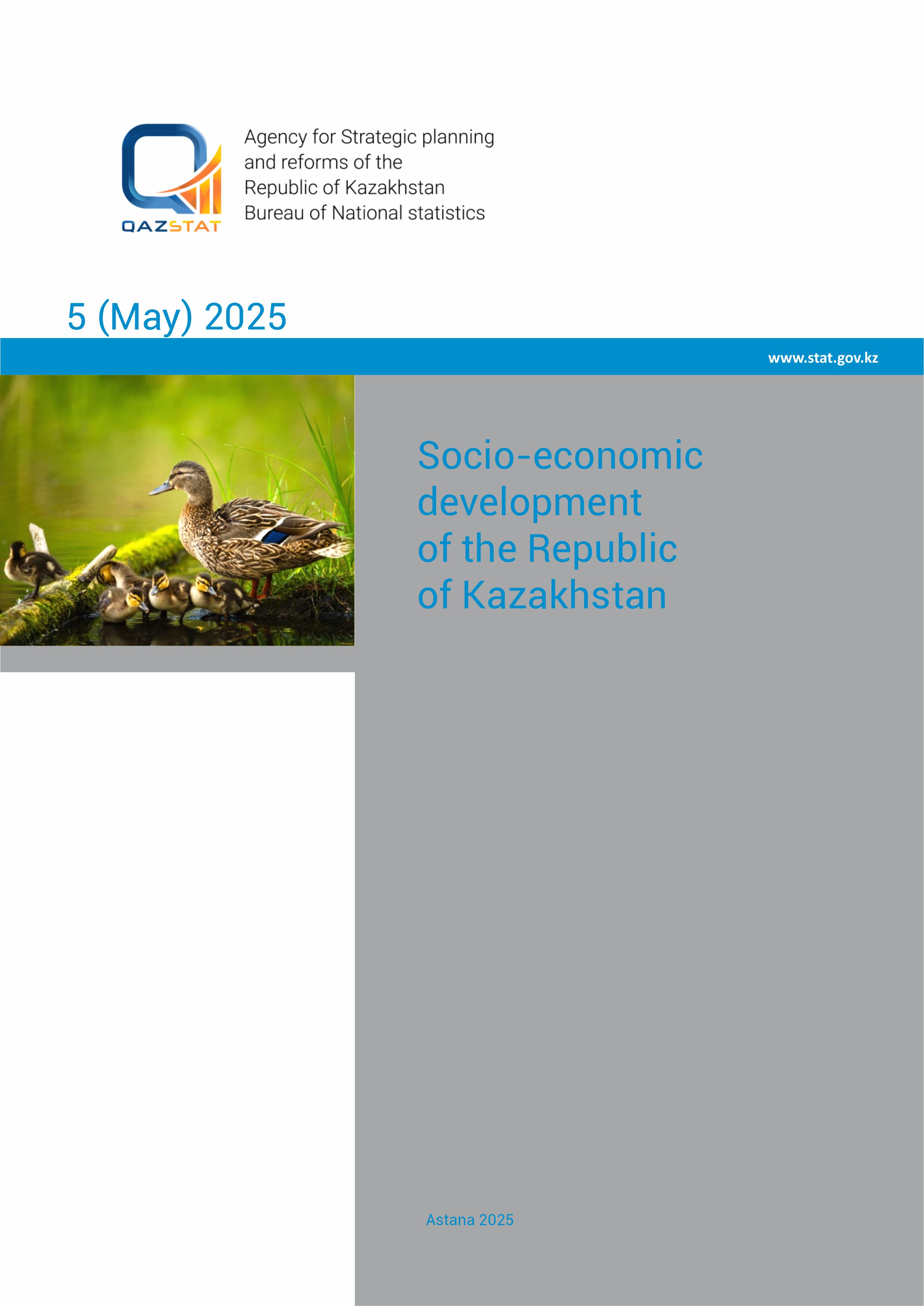| Name | 2024* | 2025* |
|---|---|---|
| Born | 155 143 | 133 562 |
| Dead | 55 535 | 53 546 |
| Natural growth | 99 608 | 80 016 |
| Arrivals | 12 217 | 9 652 |
| Dropouts | 5 753 | 2 395 |
| Balance of migration | 6 464 | 7 257 |
| Name | Percentage point |
|---|---|
| Food, drinks | 4,2 |
| Housing Services | 1,8 |
| Healthcare | 1,5 |
| Miscellaneous goods and services | 1,1 |
| Clothes, shoes | 1,0 |
| Transport | 0,5 |
| Connection | 0,5 |
| Leisure and culture | 0,3 |
| Household items | 0,3 |
| Alcoholic beverages, tobacco products | 0,2 |
| Education | 0,2 |
| Restaurants and hotels | 0,2 |
| Republic of Kazakhstan | 4,6 |
| Abay | 4,7 |
| Akmola | 4,6 |
| Aktobe | 4,7 |
| Almaty | 4,6 |
| Atyrau | 4,9 |
| Batys Kazakhstan | 4,8 |
| Zhambyl | 4,8 |
| Zhetisu | 4,7 |
| Karaganda | 4,0 |
| Kostanai | 4,6 |
| Kyzylorda | 4,8 |
| Mangystau | 5,1 |
| Pavlodar | 4,8 |
| Soltustik Kazakhstan | 4,5 |
| Turkistan | 4,8 |
| Ulytau | 4,1 |
| Shygys Kazakhstan | 4,6 |
| Astana city | 4,4 |
| Almaty city | 4,5 |
| Shymkent city | 4,8 |
| IPV GRP, % | GRP per capita, thousand tenge | |
|---|---|---|
| Republic of Kazakhstan | 105,6 | 1 500,2 |
| Abay | 100,4 | 1 213,6 |
| Akmola | 106,9 | 1 104,4 |
| Aktobe | 104,1 | 1 229,0 |
| Almaty | 107,6 | 932,0 |
| Atyrau | 102,1 | 4 711,9 |
| Batys Kazakhstan | 102,9 | 1 853,9 |
| Zhambyl | 106,3 | 565,5 |
| Zhetisu | 107,3 | 661,7 |
| Karaganda | 107,8 | 1 676,8 |
| Kostanai | 105,3 | 1 288,8 |
| Kyzylorda | 104,7 | 756,5 |
| Mangystau | 102,4 | 1 270,8 |
| Pavlodar | 106,3 | 1 493,3 |
| Soltustik Kazakhstan | 102,4 | 953,6 |
| Turkistan | 109,1 | 489,2 |
| Ulytau | 100,7 | 2 315,9 |
| Shygys Kazakhstan | 95,3 | 1 560,2 |
| Astana city | 111,9 | 2 273,5 |
| Almaty city | 106,5 | 3 025,9 |
| Shymkent city | 106,6 | 831,8 |
| Name | Export Import |
|---|---|
| Italy | 5 582,7 |
| China | 3 529,1 |
| Russia | 2 243,0 |
| Netherlands | 1 614,1 |
| Türkiye | 1 201,1 |
| Russia | 5 227,4 |
| China | 5 044,0 |
| The Republic of Korea | 843,4 |
| Germany | 785,6 |
| USA | 685,6 |
| Total income | 100,0 |
| from salaried employment | 73,5 |
| from independent activity | 10,7 |
| social transfers | 11,1 |
| other cash income | 4,7 |
 Sustainable Development Goals
Sustainable Development Goals


 National censuses
National censuses

 July 2025
July 2025

| Mo | Tu | We | Th | Fr | Sa | Su |
|---|---|---|---|---|---|---|
1 | 2 | 3 | 4 | 5 | 6 | |
7 | 8 | 9 | 10 | 11 | 12 | 13 |
14 | 15 | 16 | 17 | 18 | 19 | 20 |
21 | 22 | 23 | 24 | 25 | 26 | 27 |
28 | 29 | 30 | 31 |






